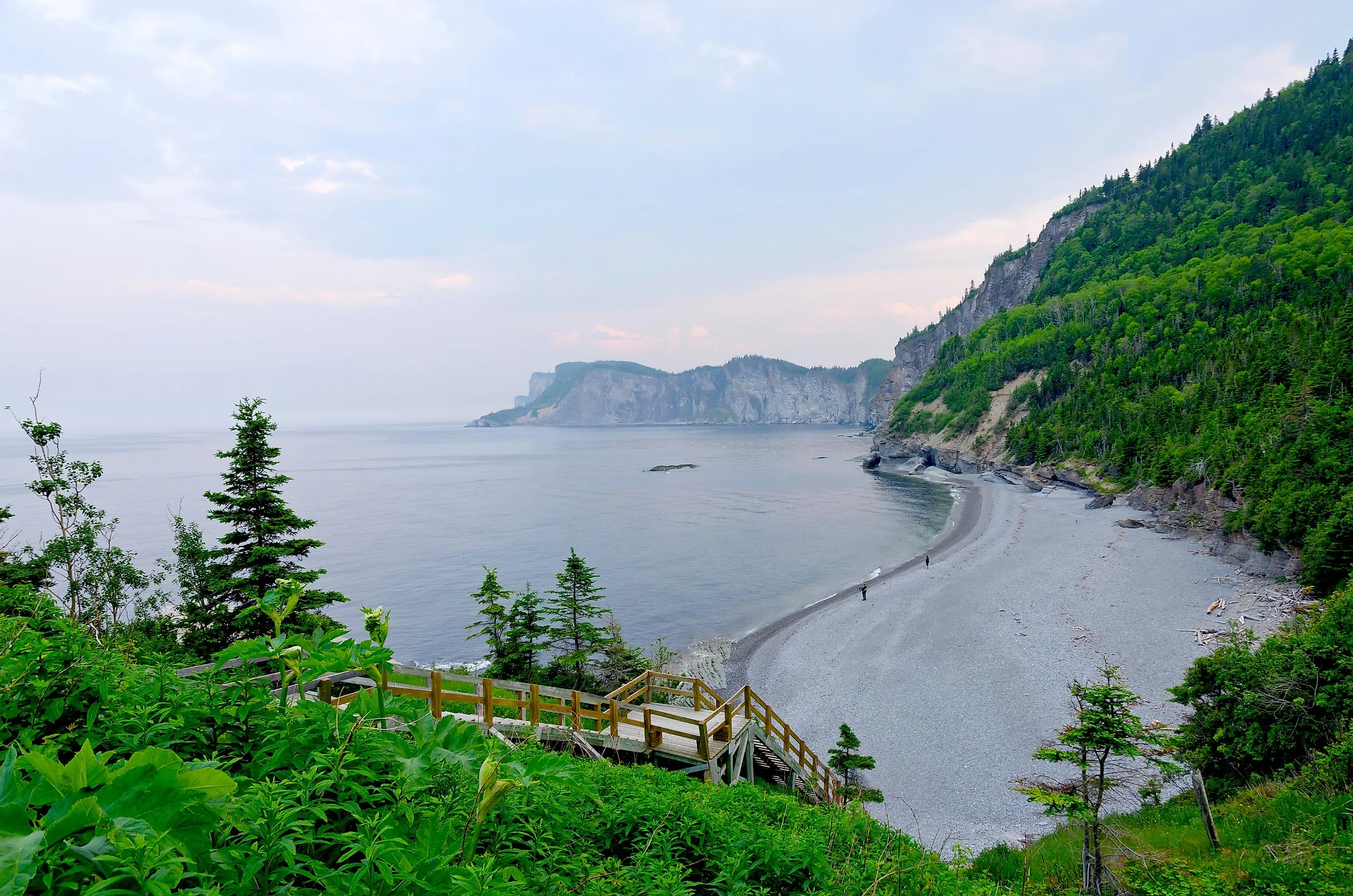
Gulf of St. Lawrence
The Gulf of St. Lawrence plays a pivotal role in northeastern North America's geography, ecology, and history. Bordered by five Canadian provinces, this body of water qualifies as a gulf because, on three separate sides, it is bounded by land while simultaneously acting as an inlet to an ocean. The gulf, boasting a diverse range of ecosystems, supports a wealth of marine life and coastal habitats, while its history reflects centuries of human settlement, exploration, and trade. From the shifting seasonal climates influenced by the Labrador Current to the numerous islands that dot its waters, the Gulf of St. Lawrence is an unmistakable feature of the Canadian landmass.
Geography
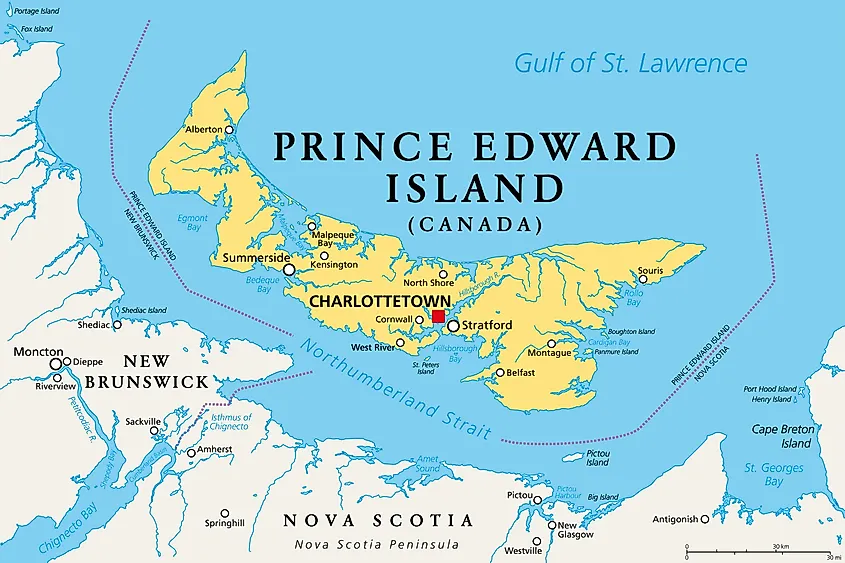
The Gulf of St. Lawrence, a semi-enclosed sea, is bordered by the provinces of Quebec, Newfoundland and Labrador, New Brunswick, Prince Edward Island, and Nova Scotia. Furthermore, the gulf stretches over 60,000 square miles, with a maximum depth of 1,740 feet. It functions as an essential outlet for the St. Lawrence River, which drains the Great Lakes and carries fresh water from their expansive basin into the Atlantic Ocean. Additionally, the Gulf is crucial in connecting the St. Lawrence Seaway, a vital commercial shipping route, to the open ocean.
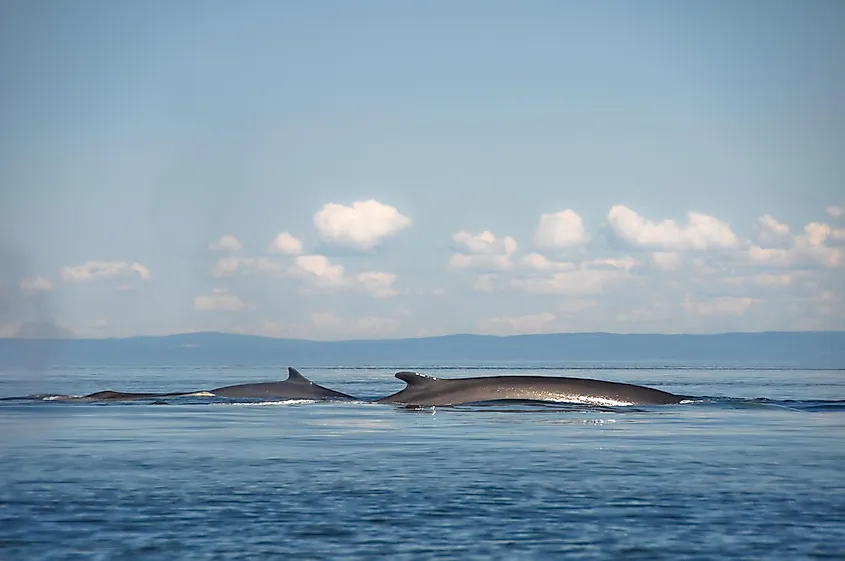
Characterized by a diverse array of ecosystems, the Gulf of St. Lawrence supports a wealth of marine life. Its complex underwater topography, comprising continental shelves, deep channels, and submarine canyons, provides a fertile environment for numerous species. The Estuary and the Gulf of St. Lawrence Marine Park, a large marine protected area, encompasses part of this remarkable ecosystem, safeguarding its natural resources and promoting scientific research. Furthermore, the Gulf's coastal regions support various habitats, such as sandy beaches, salt marshes, and rocky shores, which host numerous bird species and serve as important breeding grounds for migratory birds.
History
The history of the Gulf of St. Lawrence is one of cultural exchanges, exploration, and human settlement. Indigenous peoples, including the Mi'kmaq, Inuit, and Iroquoians, have inhabited the region for thousands of years, relying on its resources for sustenance. Their presence and knowledge of the area proved invaluable to early European explorers who arrived in the 16th century. Notably, in 1534, French explorer Jacques Cartier sailed into the gulf, laying the groundwork for future French colonization in the region. However, historians generally agree that Basque fishermen were likely in the area before Cartier.
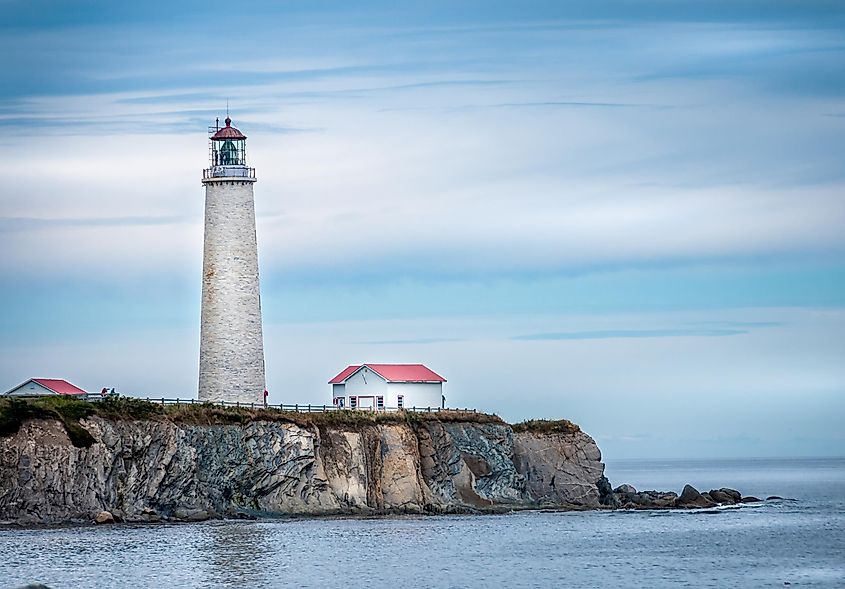
Throughout the 17th and 18th centuries, the Gulf of St. Lawrence served as a strategic gateway for European settlement and resource exploitation. The British and French vied for control over the region, with their conflict culminating in the Seven Years' War (1756-1763). The British ultimately emerged victorious, asserting control over the Gulf and surrounding territories. This geopolitical shift contributed to the decline of the French fishing industry in the area, while the British exploited the Gulf's resources, particularly its rich cod stocks.
The 19th and 20th centuries brought rapid industrialization and the development of modern transportation infrastructure, enhancing the Gulf's significance as a hub for maritime trade. The construction of the St. Lawrence Seaway in the mid-20th century cemented the region's importance as a vital commercial artery connecting the Great Lakes to the Atlantic Ocean. In recent years, the Gulf of St. Lawrence has experienced mounting environmental pressures, prompting the implementation of conservation measures to safeguard its ecosystems and natural resources.
Climate
The climate of the Gulf of St. Lawrence exhibits notable seasonal variations, influenced by both its maritime location and proximity to the Labrador Current. Winters in the region are characterized by cold temperatures and significant ice cover, as the Labrador Current carries cold Arctic waters and icebergs southward along the Gulf's eastern coast. The ice cover, which typically reaches its maximum extent in March, poses navigational challenges for ships and significantly impacts local marine ecosystems.
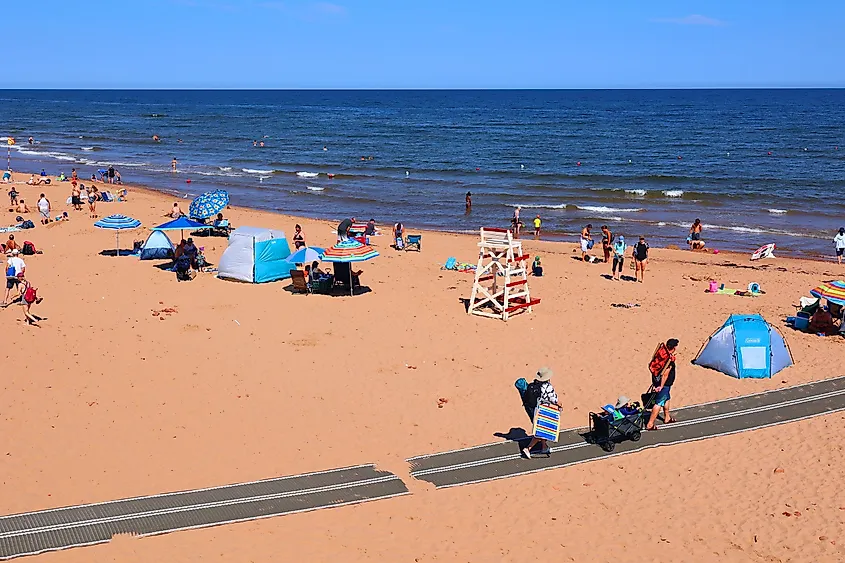
During the summer months, the Gulf of St. Lawrence experiences a more temperate climate, with warmer waters and abundant sunlight fostering the growth of phytoplankton. This annual bloom supports a thriving food web, attracting diverse marine life, including fish, seabirds, and marine mammals such as whales and seals. The coastal regions surrounding the gulf are subject to fluctuating weather patterns, as the interaction between the warm Gulf Stream and the cold Labrador Current generates fog, storms, and variable wind conditions. Despite these challenging weather patterns, the summer months still provide a hospitable environment for various species to thrive in the region.
The Gulf of St. Lawrence's climate also has a significant impact on its surrounding human populations, influencing their livelihoods and economic activities. The area's abundant natural resources, such as fish stocks, have historically supported thriving fishing industries. However, the region's climate change vulnerability, combined with the pressures of overfishing, has led to fluctuating fish populations and the need for sustainable resource management. In response to these challenges, governments and organizations are implementing conservation measures and promoting responsible practices to preserve the gulf's diverse ecosystems and the industries that depend on them.
Islands In The Gulf
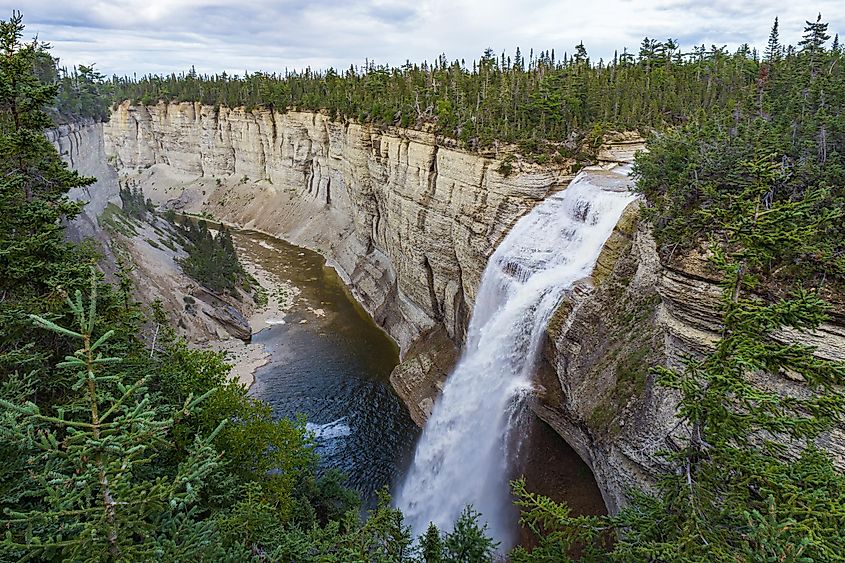
Several islands dot the Gulf of St. Lawrence, each with its unique characteristics and significance. Among the most prominent islands are Prince Edward Island, Anticosti Island, and the Magdalen Islands. Prince Edward Island, Canada's smallest province, features a diverse landscape with rolling hills, fertile farmland, and beaches. Its rich red soil and favorable climate contribute to the island's thriving agricultural industry, particularly potato farming.
Anticosti Island, situated at the mouth of the St. Lawrence River, serves as a natural barrier between the river's freshwater outflow and the saltwater influx from the Atlantic Ocean. The island's isolated location has resulted in a unique ecosystem featuring a mix of boreal forest and coastal habitats. Hunting, logging, and fishing were once prominent industries on Anticosti, but today, the island focuses on wildlife conservation and scientific research. This is partly due to the island's status as a "hazard to shipping."
The Magdalen Islands, an archipelago in the central part of the gulf, comprise a vibrant cultural and ecological landscape. The islands, known for their distinctive red sandstone cliffs and extensive sand dunes, support a diverse range of habitats, such as salt marshes, lagoons, and maritime meadows. These environments provide crucial nesting and foraging grounds for various migratory bird species.
Fauna And Flora
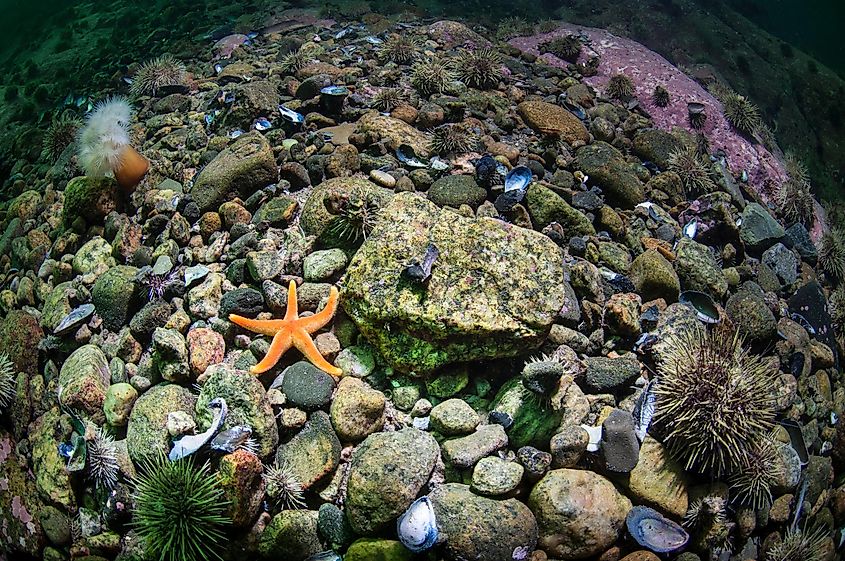
The Gulf of St. Lawrence supports many species of life due to a convergence of different water currents. Marine life in the gulf is particularly abundant, with numerous fish species, such as cod, halibut, and flounder, thriving in its nutrient-rich waters. The gulf is also home to various marine mammals, including seals, porpoises, and several whale species, such as the endangered North Atlantic right whale and the more common humpback and minke whales.
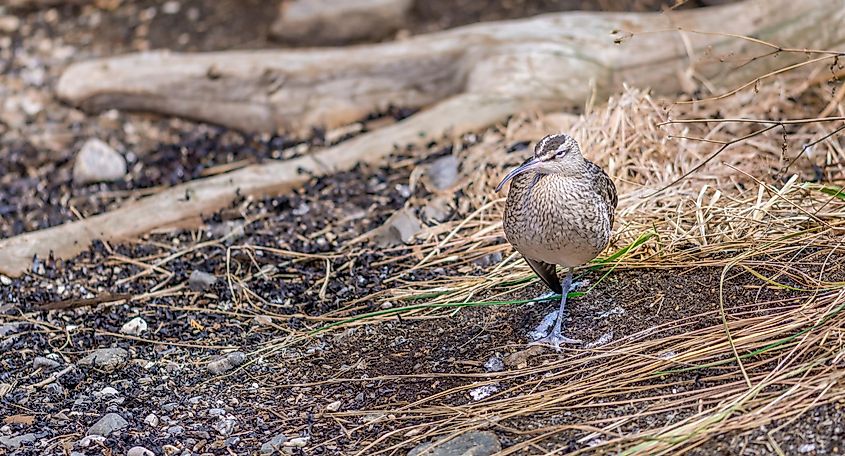
The coastal regions and islands in the Gulf of St. Lawrence support diverse plant and bird life. The various habitats, including salt marshes, coastal meadows, and forests, provide nesting and foraging grounds for migratory birds, such as sandpipers, plovers, and terns. Plant life in the region is equally diverse, with species ranging from boreal forest trees, like spruce and fir, to coastal plants, such as sea lavender and cordgrass.
The Gulf of St. Lawrence is an ecological and economic asset in northeastern North America. Its ecosystems, history, and role in maritime trade and transportation have invariably shaped the region and the people who have chosen to settle there. The Gulf's natural landscapes and abundant marine life support thriving industries. Therefore, protecting and preserving this remarkable region is essential for maintaining its ecological balance and ensuring a sustainable future for the Gulf of St. Lawrence and the communities it supports.











